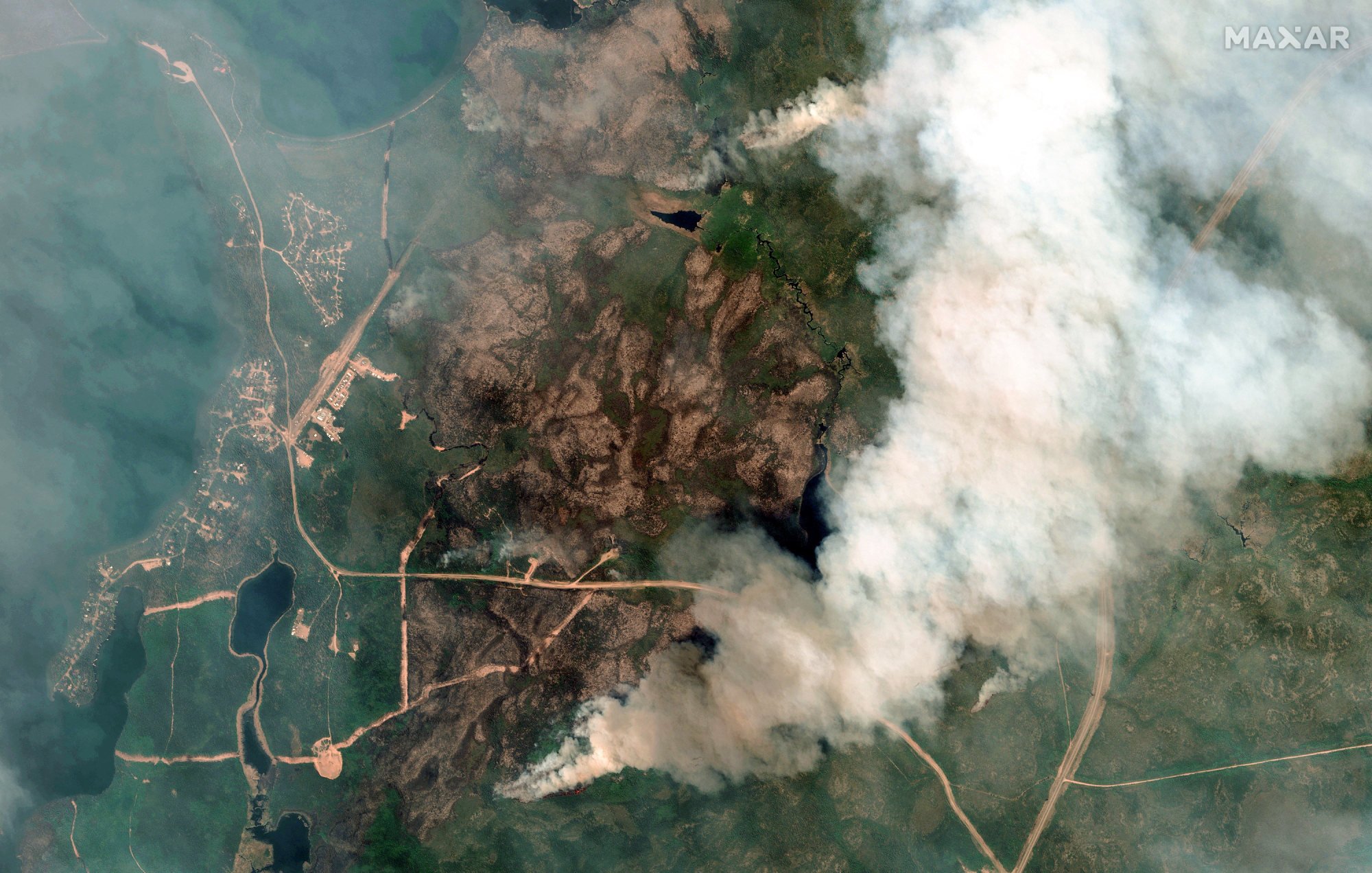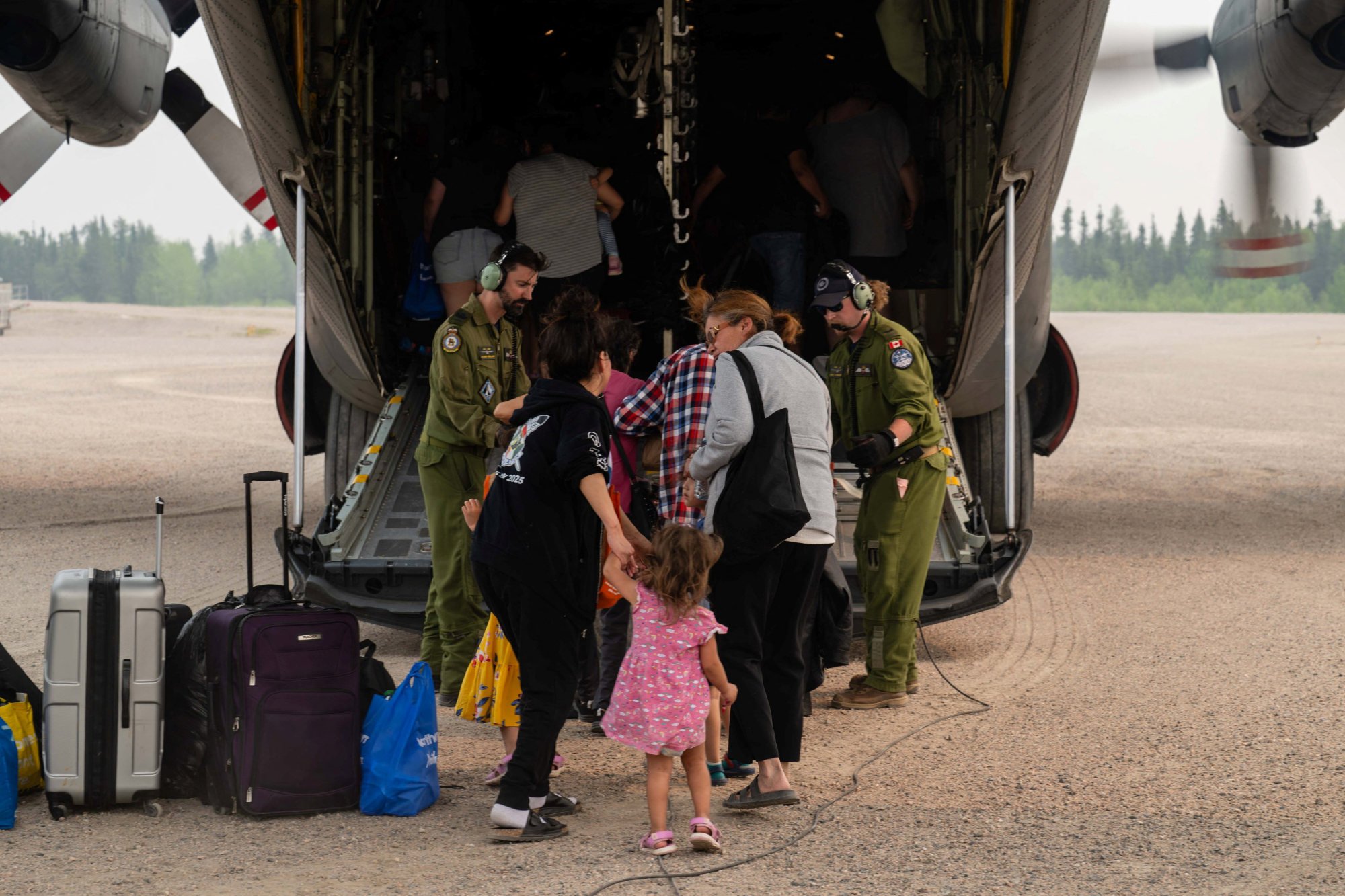Over 25,000 inhabitants across three provinces were displaced as numerous wildfires continued to burn on Sunday, leading to reduced air quality in certain areas of both Canada and the United States, authorities reported.
The majority of those who were displaced came from Manitoba, where a state of emergency was announced earlier this week. By Saturday, approximately 17,000 individuals had been evacuated in Manitoba, alongside around 1,300 in Alberta. In Saskatchewan, roughly 8,000 people had been moved from their homes, with officials indicating that this figure might increase further.
The smoke was deteriorating air quality and decreasing visibility in Canada as well as affecting several U.S. states along the border.
Are you looking for insights into the most significant issues and global developments? Find your answers here. SCMP Knowledge Our latest platform features handpicked content including explainers, FAQs, analyses, and infographics, all provided by our prestigious team.
The Saskatchewan Public Safety Agency cautioned on Sunday that air quality and visibility because of wildfire smoke may change rapidly over small areas and can differ significantly within an hour. They also stated that as smoke levels rise, so do the associated health risks.

Scott Moe, the Saskatchewan premier, stated that persistent hot and dry conditions are enabling certain wildfires to expand and pose threats to nearby towns. He also mentioned that the current efforts to combat these fires and assist those who have been evacuated are being severely strained due to resource limitations.
"Over the coming four to seven days, it’s crucial that we manage to alter the prevailing weather conditions and eventually receive substantial rainfall across the northern region," Moe stated during a press briefing on Saturday.
In Manitoba, over 5,000 people who were forced to leave their homes come from Flin Flon, which sits approximately 645 kilometers (400 miles) northwest of the province’s capital city, Winnipeg. Further north in Manitoba, wildfires caused a power outage in the town of Cranberry Portage, leading to a compulsory evacuation affecting around 600 inhabitants on Saturday.
The wildfire threatening Flin Flon ignited about a week ago close to Creighton, Saskatchewan, and swiftly crossed over into Manitoba. Firefighters have had difficulty controlling it. A thick haze has led to sporadic grounding of water-bombing aircraft, along with an incident involving unauthorized drones.
The United States Department of Agriculture’s Forest Service has dispatched an aerial firefighting aircraft to Alberta and announced plans to deploy 150 fire fighters along with necessary equipment to Canada.
On Sunday, certain areas within North Dakota experienced air quality deemed "unhealthy." Small sections of Montana, Minnesota, and South Dakota also saw similar conditions, as reported by the US Environmental Protection Agency’s AirNow website.

"At least a few more episodes of Canadian smoke passing through the U.S. can be anticipated for the upcoming week," stated Bryan Jackson, a meteorologist from the National Weather Service in the United States.
In another incident, a blaze in the U.S. border state of Idaho had consumed at least 100 acres by Sunday, leading to road closures and partial evacuations, reported the Idaho Department of Lands. The agency stated in a press release that at minimum one building was destroyed; however, further specifics regarding the extent of the destruction were not provided.
Powerful gusts with speeds between 24-32 km/h (15-20 mph), coupled with rugged topography, posed significant challenges for the firefighting efforts as they struggled against the blaze that started on Saturday.
Shelter centers have been established throughout Manitoba for individuals escaping the wildfires, including one located as far south as Winkler, which is just 20 kilometers (12 miles) away from the U.S. border. In response to accommodating more displaced people, Winnipeg has converted various public facilities into shelters since many of its hotels are already filled with other wildfire evacuees, tourists, professionals, and attendees of conventions.
The indigenous leaders of Manitoba stated during a press briefing on Saturday that hotels in the arrival cities for evacuees have reached capacity. They subsequently appealed to the government to instruct hotel owners to prioritize accommodation for these evacuees.
The Assembly of Manitoba Chiefs' Grand Chief Kyra Wilson stated that this evacuation ranks among the biggest in the province since the 1990s.
"It's really sad to see our children having to sleep on floors. People are sitting, waiting in hallways, waiting outside, and right now we just need people to come together. People are tired," Wilson said at a news conference.
The wildfire season in Canada occurs between May and September. The most severe wildfire season took place in 2023, shrouding large parts of North America in hazardous smoke for several months.
More Articles from SCMP
Origin of dark particles found in Hong Kong residential area's water source still unknown
Japan and Singapore demonstrate that even perceived safe havens for investments can still have their issues.
'Not just chess pieces' in great power competition: ASEAN asserts autonomy at Shangri-La Dialogue
Man from Taiwan charged with killing his ill mother, found dead after being left in the bathroom for several days.
The article initially appeared on the South ChinaMorning Post (www.scmp.com), which is the premier source for news coverage of China andAsia.
Copyright © 2025. South China Morning Post Publishers Ltd. All rights reserved.

Posting Komentar